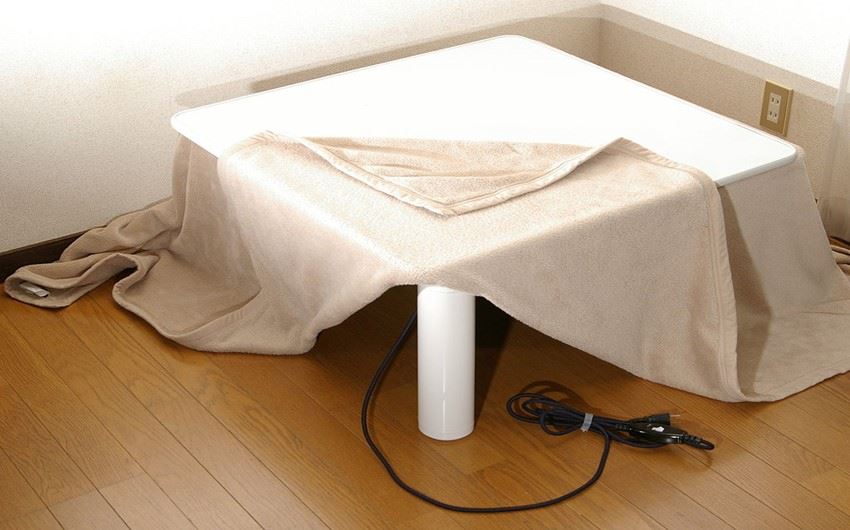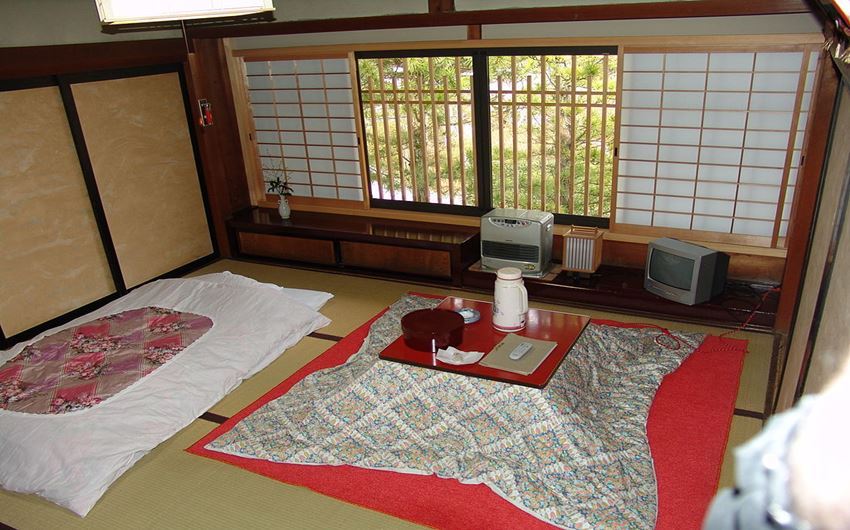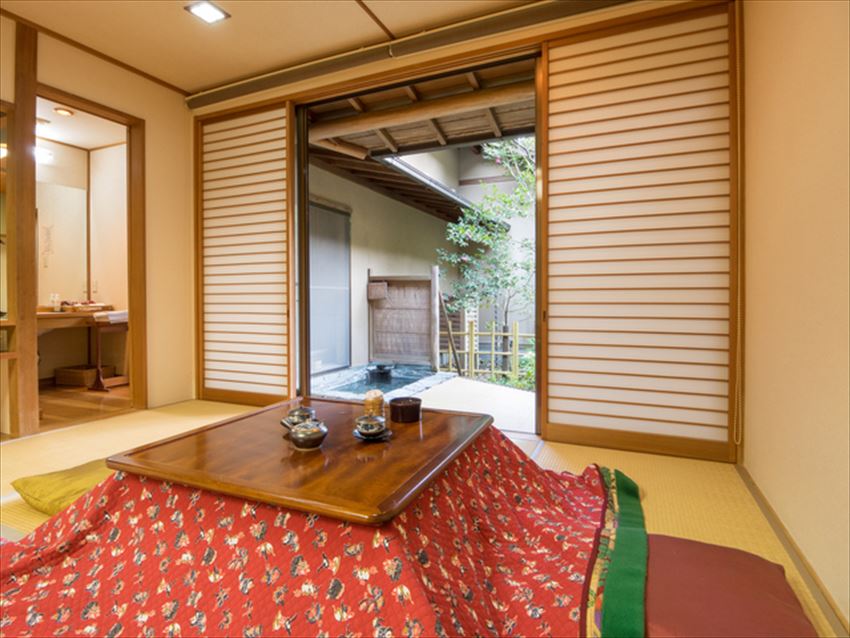Japanese people love kotatsu, which are low tables with a heat source.
Kotatsu are a type of traditional Japanese heating equipment that are said to have originated over 600 years ago.It is said that the kotatsu originated from a spacious temple.
Heating equipment at that time consisted of sunken fireplaces in which firewood and charcoal were burned to generate heat, but they were not very effective for warming up spacious temples.
For this reason it was decided to set a wood frame over a sunken fireplace, place bedding on top of this frame, and have everyone put their legs inside the bedding.
The use of kotatsu among the general public began to spread after that, and the heating sources that were used consisted of things that would burn after ignition, namely coal briquettes and oval briquettes.
Subsequently, a hundred years ago during the Taisho era the electric kotatsu was also developed, but it was not yet like the modern kotatsu that is a one-piece unit combining the frame and heater.
The electric heater was put on the floor in the same manner as coal or oval briquettes, and the frame and heater was placed over the heater.
This form of electric kotatsu did not prove to be very popular.


The explosive spread of the modern kotatsu wasn’t until the 1950s.
With the combination of the heater and frame into a one-piece unit, it became possible to freely extend your legs under the kotatsu, and this type of kotatsu soon became a standard piece of household equipment after this development.
Furthermore, putting a board called a kotatsu board on top of a kotatsu stand allows it to be used as a table.
For this reason, once it gets cold, many Japanese households always set up the kotatsu as a place for chatting and passing the time together as a family.
While a kotatsu is an essential part of seasonal winter traditions in Japan, the way people enjoy kotatsu has changed a bit over time.
While tangerines were the popular food to eat while in the kotatsu up until the end of the 20th century, recently it has become increasingly popular to eat cold ice cream while enjoying the warmth of the kotatsu.


Compared to the past, it has become warmer inside homes in general with the recent spread of air conditioning and other types of heating equipment, meaning that one doesn’t have to hugely rely on a kotatsu to withstand the cold.
While kotatsu may no longer be as essential as they once were, this has not changed the love of Japanese people for kotatsu.


Comments